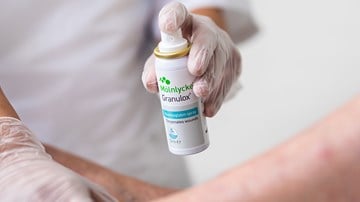Preventing infections in surgical wounds
Up to one in 20 patients undergoing surgery will develop a surgical site infection (SSI) 1, so it’s vital to protect surgical wounds post-operatively.

SSI and other skin complications can interfere with the normal healing process – leading to prolonged hospitalisation and even the need for further surgery 2 3 – as well as pain and discomfort for patients 4.
Dressing-related risk factors for SSI
Surgical wounds, like other wounds, are an ideal breeding ground for pathogens. Once the patient has left the operating room, a number of factors relating to the use of wound dressings may increase the risk of wound infection.
Dressing changes are associated with a risk of infection: the more often a dressing is changed, the more the wound is exposed to contamination 3.
Poor exudate management is also a risk factor. Wound exudates contain material derived from contaminating microorganisms 5. When they aren’t managed effectively, there’s a greater risk of moisture-related damage (i.e. maceration) and bacterial contamination of the wound, particularly if there is leakage outside the dressing 3.
Damage to the skin around the wound is also associated with infection. For example, the adhesive tapes that are used to hold traditional dressings in place are associated with the development of wound blisters 5. When blisters burst, there’s an increased risk of infection 5.
'References'





